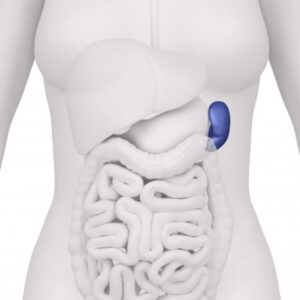
Spleen Pain Location
The spleen in western medical terms is technically a large lymph node and functions like a blood filter. It removes old red blood cells and holds a reserve of red blood cells as well as recycling iron. Even though one can still live without a spleen, it is known that this predisposes them to certain types of infection.
The spleen in Traditional Chinese Medicine terms is regarded as a very important organ and now recent research has proven that a specific acupuncture point, yinlingquan on the Spleen meridian on the leg, actually increases the blood supply to the spleen.
The acupuncture point yinlingquan is classified as He-Sea point which means that the energy and blood can be directed into the spleen organ when it is needled. Research like this is quite exciting as modern science is verifying age old traditional Chinese medical concepts.
2000 years ago Chinese physicians had already worked out the role of the Spleen in relation to blood, many centuries before western medicine made the correlation. The acupuncture point yinlingquan has many uses including bloating of the abdomen, tiredness, excess thinking classified as pensiveness, depression, urination difficulties and chronic yeast infections like Candida.
Researchers demonstrated that using electro-acupuncture at the 2 Hertz frequency increased the mean blood flow/perfusion in the spleen. This was confirmed by the recording results of a laser Doppler blood flow monitor that was used before, during and after the needling of the point. To confirm that it was actually the spleen acupuncture He-Sea point that was increasing the blood flow to the spleen, the researchers also used the Liver He-Sea acupuncture point. They found it had no effect on the spleen but it did however improve blood flow to the liver!
The acupuncture point yinlingquan has been commonly used for the treatment of candida and now researchers suspect that improving blood flow to the spleen can improve immunity and thus treat viruses and bacteria.